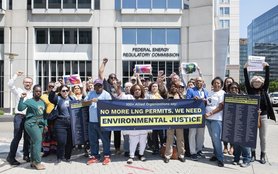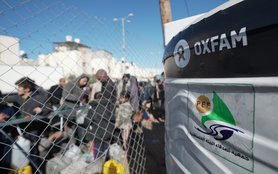In the aftermath of Typhoon Mangkhut, Oxfam, the Citizens' Disaster Response Center (CDRC), and Cagayan Valley Disaster Response Center have identified that people affected most urgently need clean water and shelter. A truck carrying clean water and jerry cans is being sent to the region tomorrow. Oxfam is also preparing to distribute materials for shelter repair, including tarpaulins and ropes. There are significant logistical challenges to delivering immediate support as rains and landslides have damaged critical infrastructure, making assessment difficult in some areas. Roads, bridges, powers lines, and cell sites are down.
The teams have been visiting towns in the northern coastal area of Cagayan, towns along the Cagayan River, and in the neighboring province of Isabela. Cagayan, Isabela, Kalinga, and Apayao seem to be some of the worst hit regions at this point, with significant damage to shelter, infrastructure, and agriculture.
Oxfam's April Bulanadi said “Thousands of evacuees are currently staying inside churches and schools. Survivors have told us that families in some evacuation centers can only drink from hand pumps which are over half a mile away. Some have brought bottled water but supply is limited. Clean water is an urgent priority."
Based on the results of initial assessments, the identified immediate needs in addition to clean water and shelter include food, hygiene kits and cash transfers as people have lost their sources of income.
Bulanadi continued, “The bridge in Sta. Barbara Piat in Cagayan, which connects to other towns in Cagayan, is impassable. What I thought was a river in Iguig town turned out to be a completely submerged rice field. While I was able to see some farmers desperately harvesting crops the day before the storm hit, it was clear many were not able to do so. This is heartbreaking because it was supposed to be harvest season next month. This will have devastating impacts on small farmers, many of whom are still recovering from Typhoon Haima in 2016.”
William Quillopo, who lives in a coastal community in Aparri, Cagayan showed Bulanadi the spot where his house used to stand. When asked if he was able to save any of his possessions, Quillopo said "I was not able to save anything. Not a single thing.” He said that Super Typhoon Mangkhut is much stronger than Typhoon Haima, which also hit his community in 2016.
Agriculture Secretary Manny Piñol said a total of 1.5 million farmers and over 100,000 fishing communities could be affected by the typhoon. Rice could suffer losses amounting to PhP 3.6 billion ($66.5 million) on a moderate estimate, or up to PhP 7.9 billion ($146 million) in a worst-case scenario. Corn crops could suffer PhP 2.7 billion ($50 million) in losses under moderate conditions, or up to PhP 3.1 billion ($57 million).
As of today, the full extent of damages has yet to be determined, as many areas especially in the Cordillera Administrative Region are still unreachable. Mikhail Valle, Executive Director of CDRC confirmed that: “It will take a few more days to get a more comprehensive picture because floods, situation and mud from landslides, and storm debris are limiting access.”
Maria Rosario Felizco, Oxfam Philippines Country Director, said, “Addressing immediate needs is crucial to ensure the safety and dignity of survivors, so we are prioritizing the distribution of water and shelter materials. But we must also anticipate that the survivors of Typhoon Mangkut, especially small fishers and farmers who have lost their source of income, will need support far beyond the first few days of this response."
ENDS


